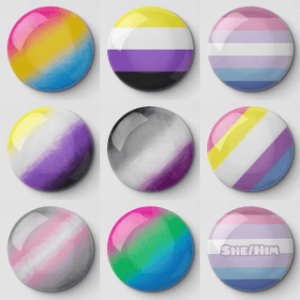It is evident that hat pin collecting to a diversified hobby combining history, design and personal expression. Originally associated with the late 1800s and early 1900s, hat pins now are almost exclusively sought as collectible treasures adorning women's apparel. Noted its rich history and unique designs, 42% of collectors favor vintage hat pins when the National Button Society asked them in a survey conducted on Ocotber '23. It is with these early hat pin shops in mind that most collectors concentrate on those made between 1890 and 1920, the years of what became known as the “golden age” for hatpins.There were pins made simply in metal heads but also gem-studded elaborate pieces.
You must be able to understand terminology IS industry-specific in order collect effectively. In collecting circles you'll often hear the term "clutch back", "stick pin" and even "lapel pin". Modern hat pins can have clutch backs, while the vintage ones will often feature longer stems and more detailed tops. Hat pins are defined based on certain attributes of design, like Art Nouveau or Victorian style — specific time frames for hat pin appearance that characterize the item. Depending on the specific design, collectors interested in period designs are willing to pay from $ 50 for simpler ones up until more than over five hundred US dollars for rare or gemstone embellished pieces.
Hat pins can be bought at auction houses or over online marketplaces such as eBay and Etsy. Coincidentally, this is a theme that features particularly prominently at auction and there are numerous well-documented examples — such as the 2021 Bonhams sale in which an assortment of Edwardian hat pins fetched more than $3k; useful evidence both for their worth within historical circles as well as developing demand among savvy collectors. But for those who are new to collecting, it makes sense to begin investing in more modern reproductions that typically cost less before upgrading into rare and therefore high-value collectibles.

Collecting requires some artful budgeting and business acumen. Most collectors have a monthly budget of $50 to 200 for new additions. Picking a specific category, like all flower pins or from one era is going to make your bag enormous before you know it. If a collection is well organized, it may increase in value over time — particularly if there are rare or one-of-a-kind items within the collection. Take the Art Deco hat pins market for instance, up by 15% in value over a decade fuelled by increased demand among collectors of early twentieth century design.
The Hobby of Talking to Fellow CollectorsNetworking with other collectors is a huge part of the hobby. Enterprising organizations such as the American Hatpin Society provide tools, message boards and meetings to facilitate enthusiasts meeting one another or trading/buying hat pins. It is useful if you want to stay updated on what the current trends are so that way it can help identify authentic pieces, since real and fakes look very similar.
As famed collector and historian Jane Smith once said, "Collecting hat pins is not just about the pins themselves but also...the stories they tell — each piece is a window into fashion and culture from a bygone era." The point around preservation of a piece of history with your own twist speaks camera collections more, which is how many collectors view their interest.
For a hobby celebrating history or enjoying the visual diversity on display, hat pins provide collectors with an interesting mix of fashion and lineage—the perfect complement to any collection.